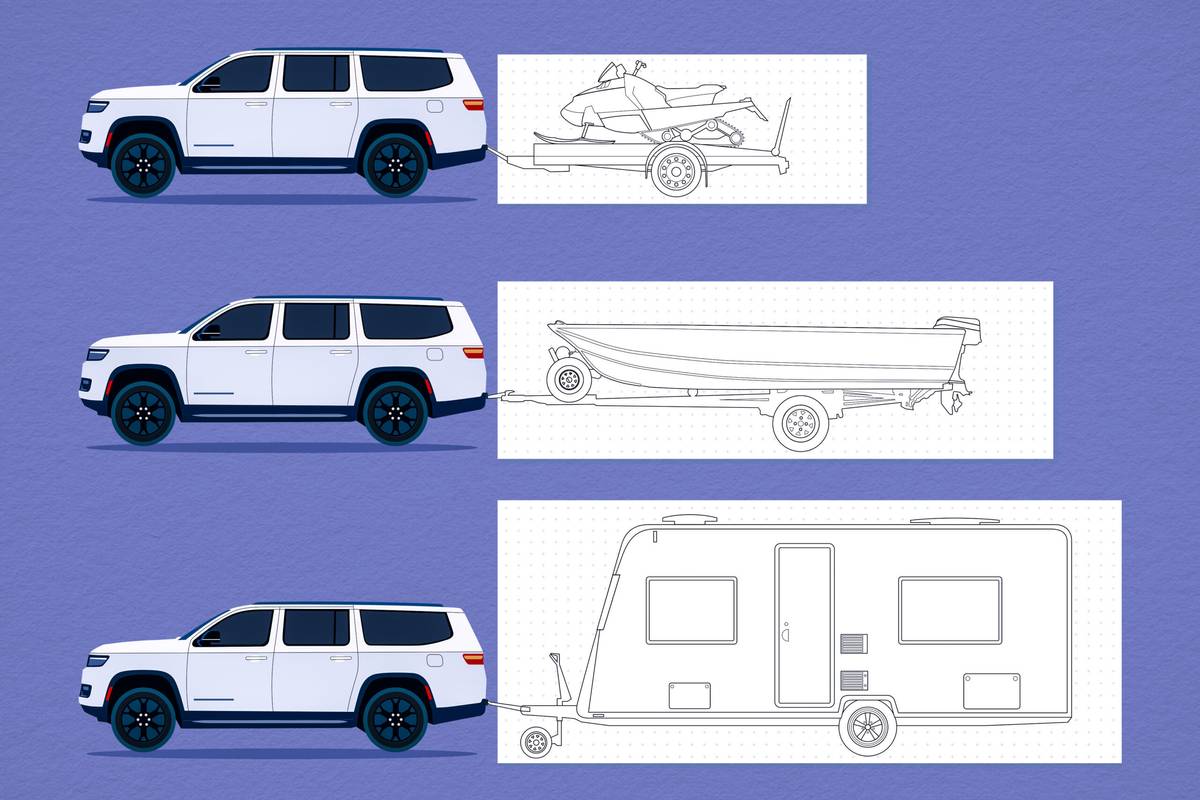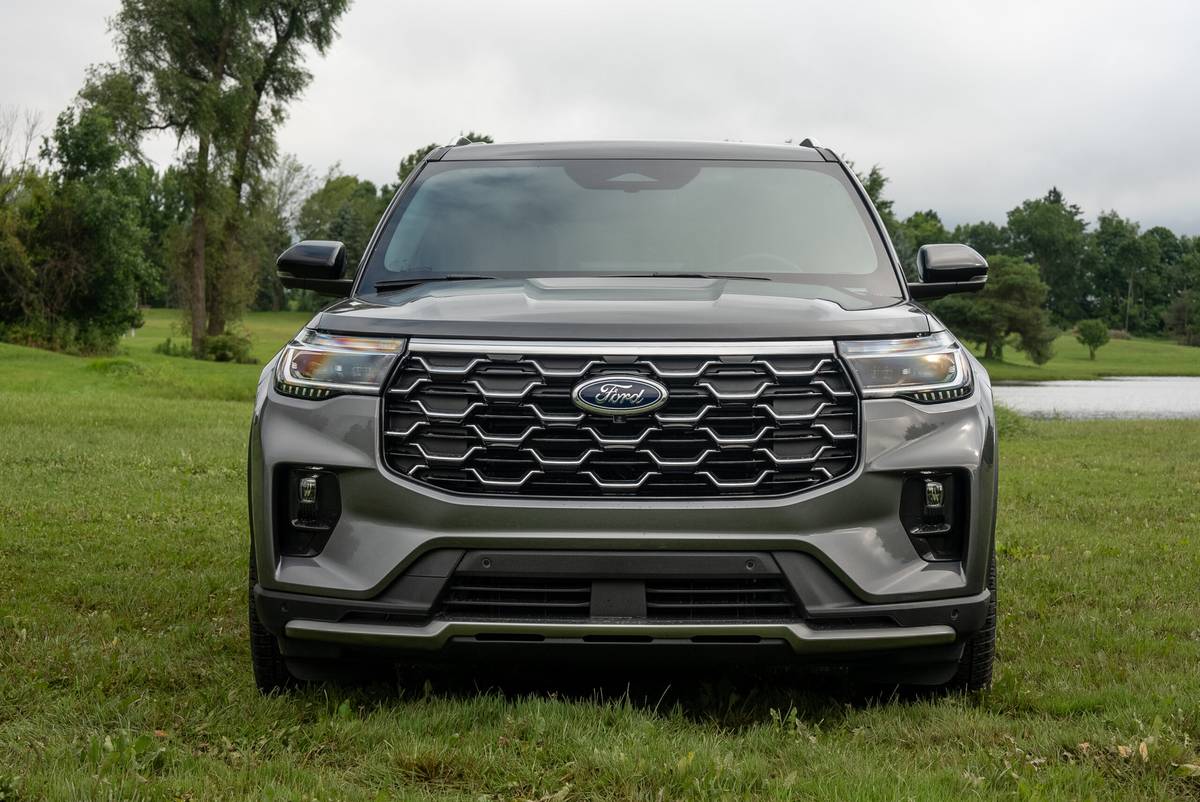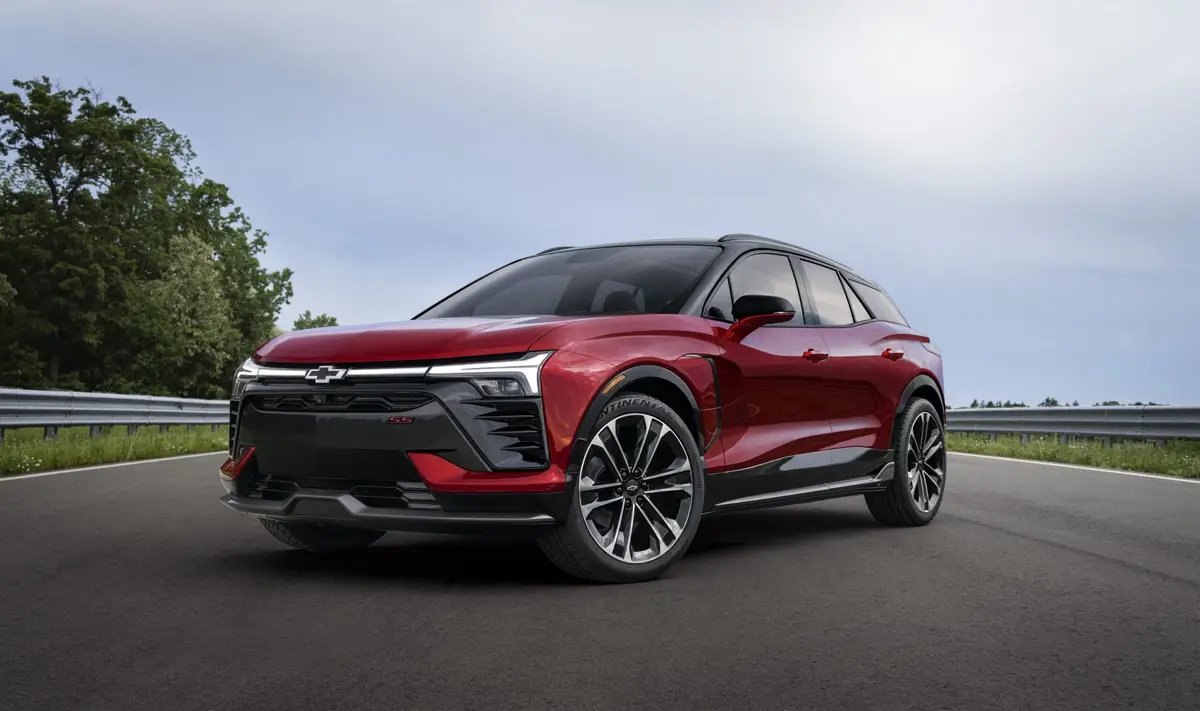2021 Jeep Wrangler Unlimited 4xe Electric Range Test: Is It Better Naked?

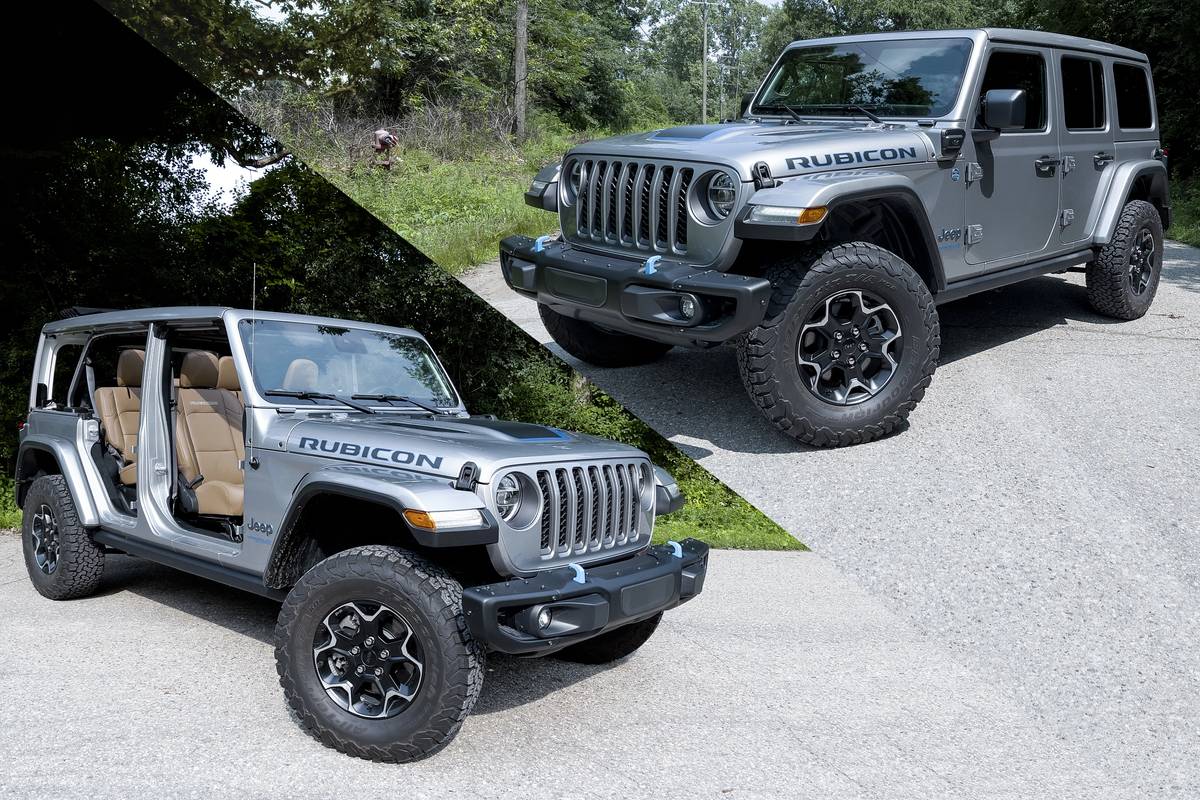
It’s still kind of amazing to me that there’s a plug-in hybrid electric Jeep Wrangler for sale right now, the Wrangler Unlimited 4xe (pronounced “4-by-E”). The addition of batteries and an electric traction motor brings the number of available powertrains for the Wrangler to six — two 3.6-liter V-6 engines (one with a mild-hybrid assist), a turbocharged four-cylinder, a diesel V-6, an insane 6.4-liter V-8 and this gas-electric hybrid that combines the 2.0-liter turbo four with a 134-horsepower electric traction motor. It’s supposed to allow for near-silent cruising through the forest with an EPA-rated 21 miles of all-electric commuting range and 370 miles of overall range once the gas engine kicks in. If the battery runs out of juice, it’s rated to get 20 mpg combined, which is actually less than the gas-only 2.0-liter turbo (22 mpg) and a lot less than the Wrangler EcoDiesel (25 mpg).
It’s not the most efficient option for the Wrangler once the battery is depleted, but it is rated to go 21 miles gas- and emissions-free, so it’s theoretically possible that you can have an electric Wrangler that never needs fuel if your commute is less than 10 miles each way. But I was curious about a real-world test to see just how far I could go on a single charge.
Related: 2021 Jeep Wrangler Unlimited 4xe Review: Not Bad, Just Confusing
The Ride
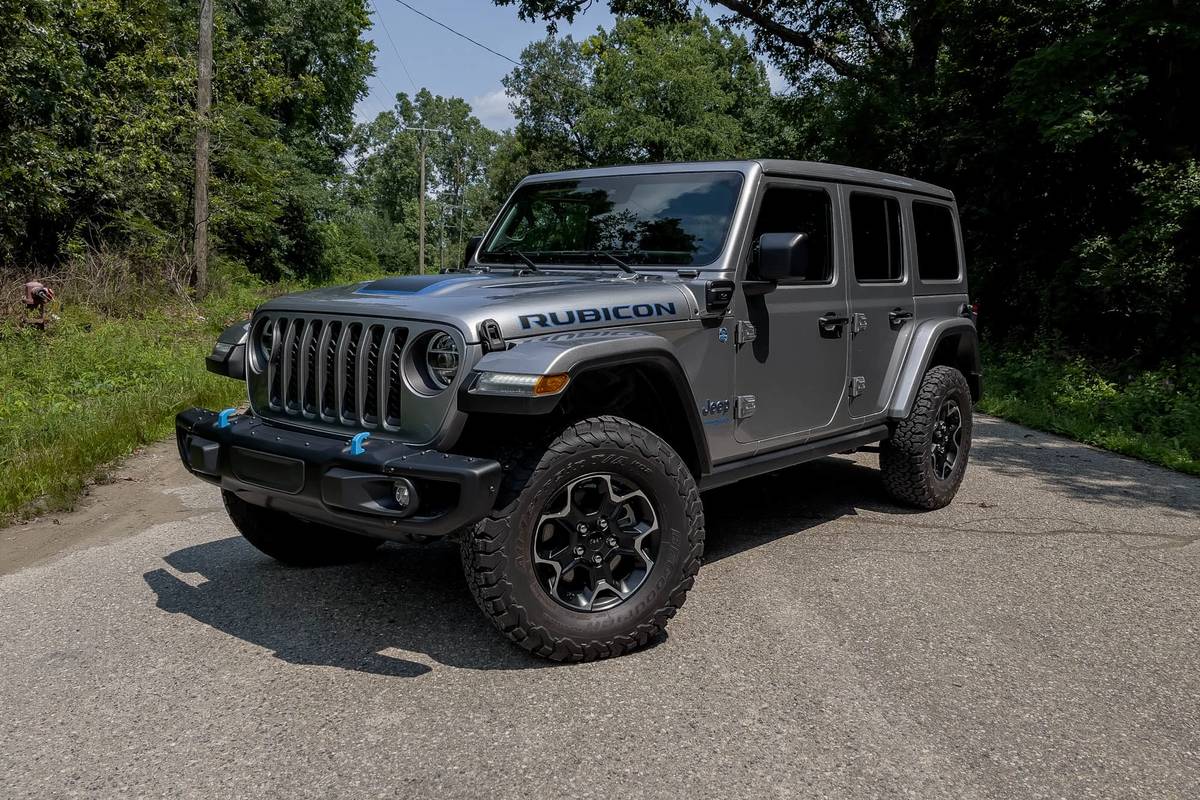
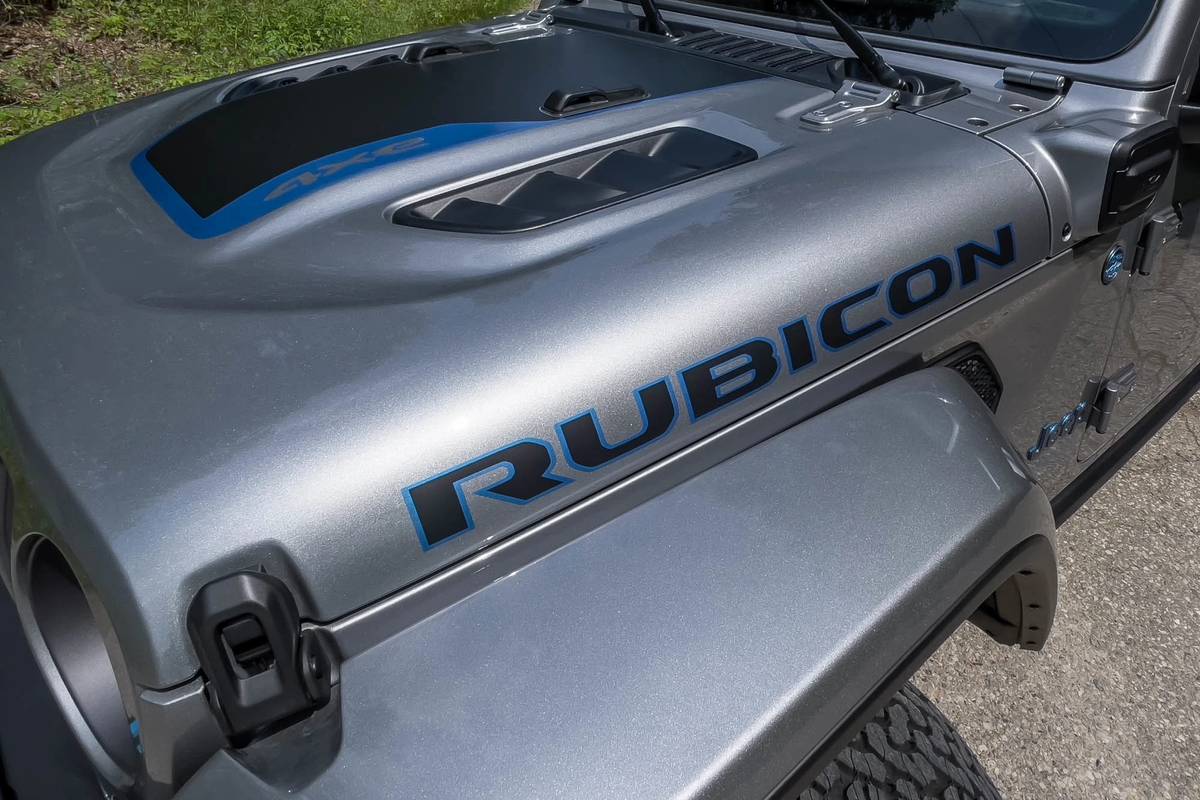
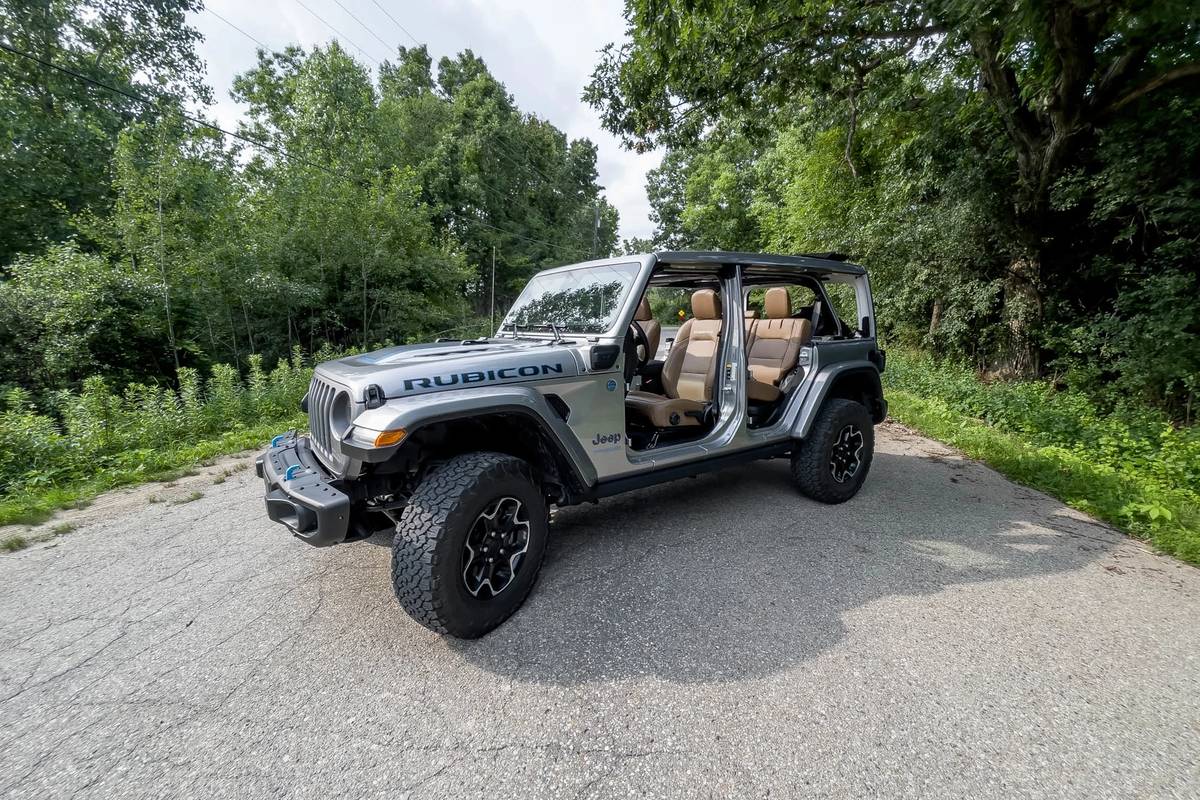
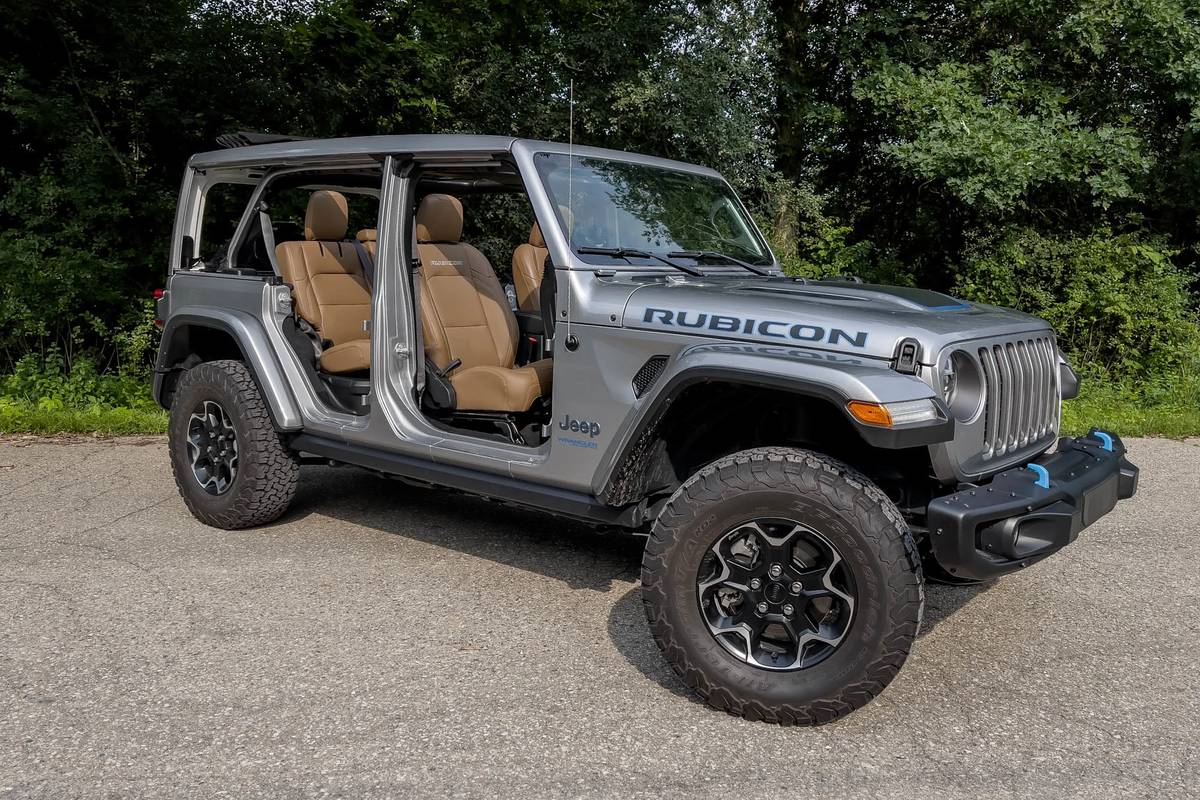
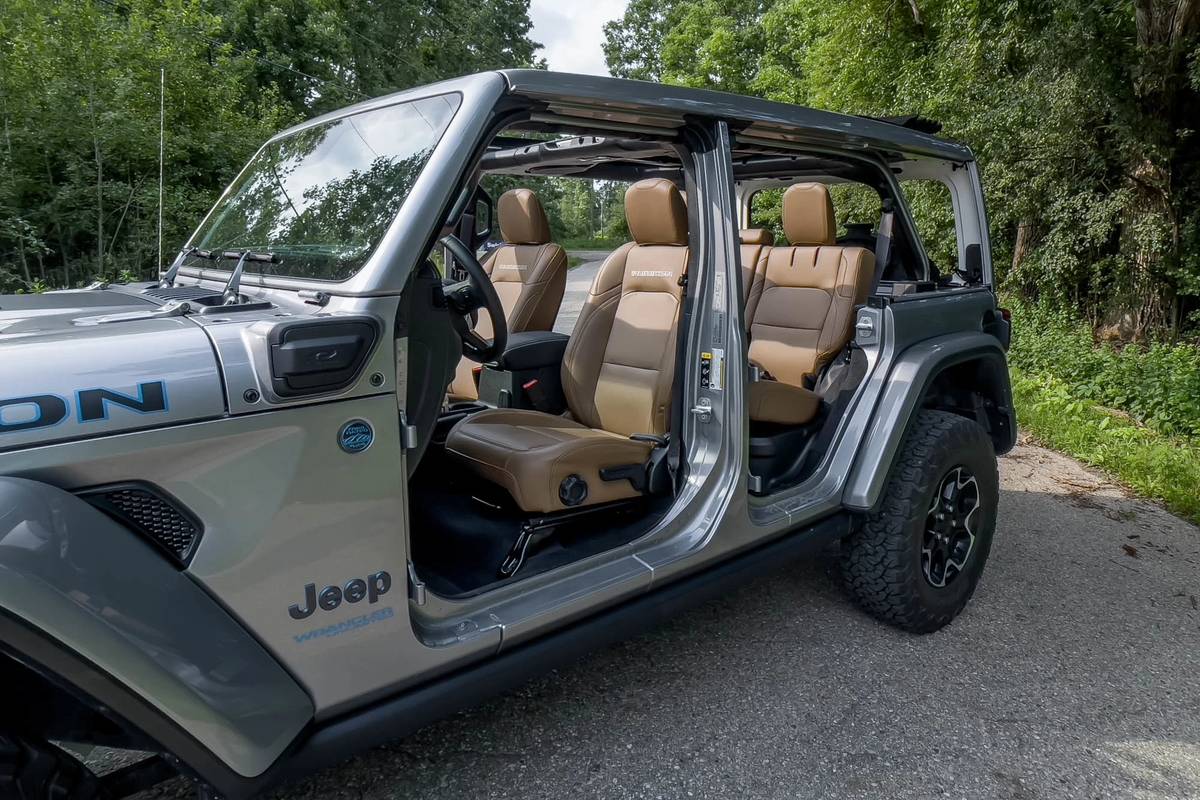
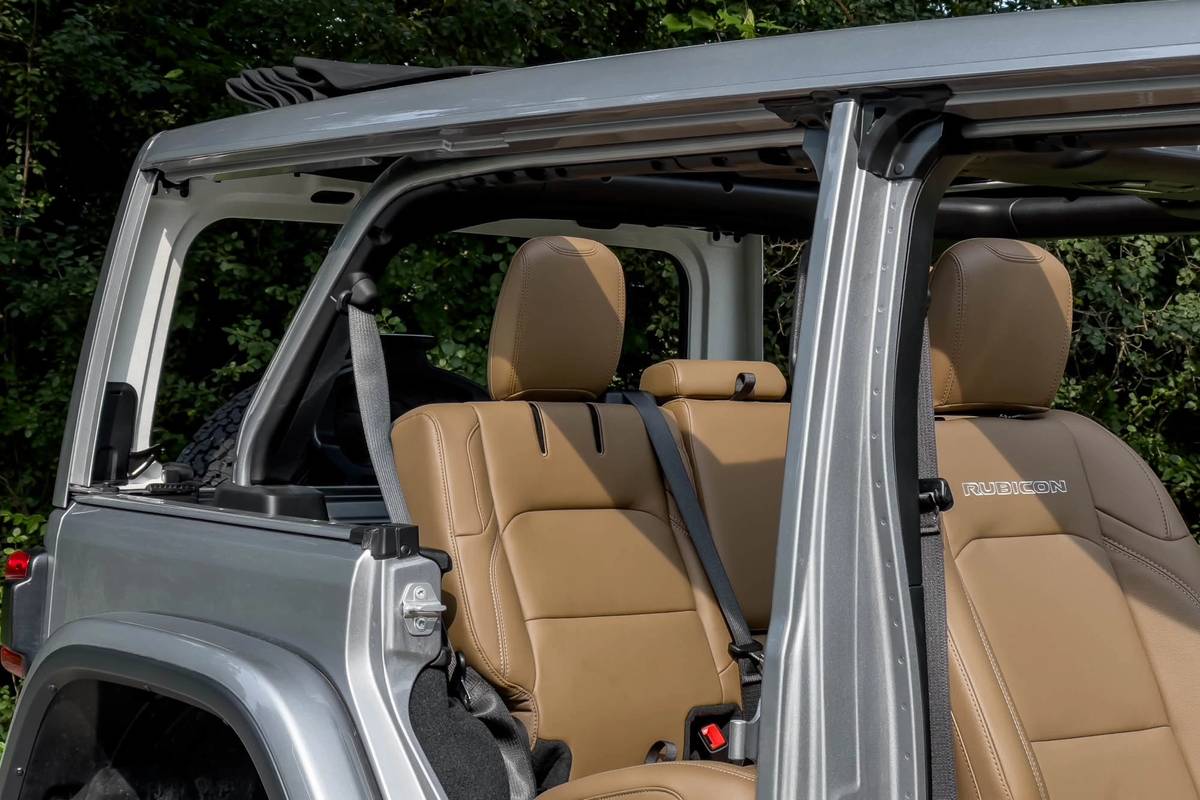
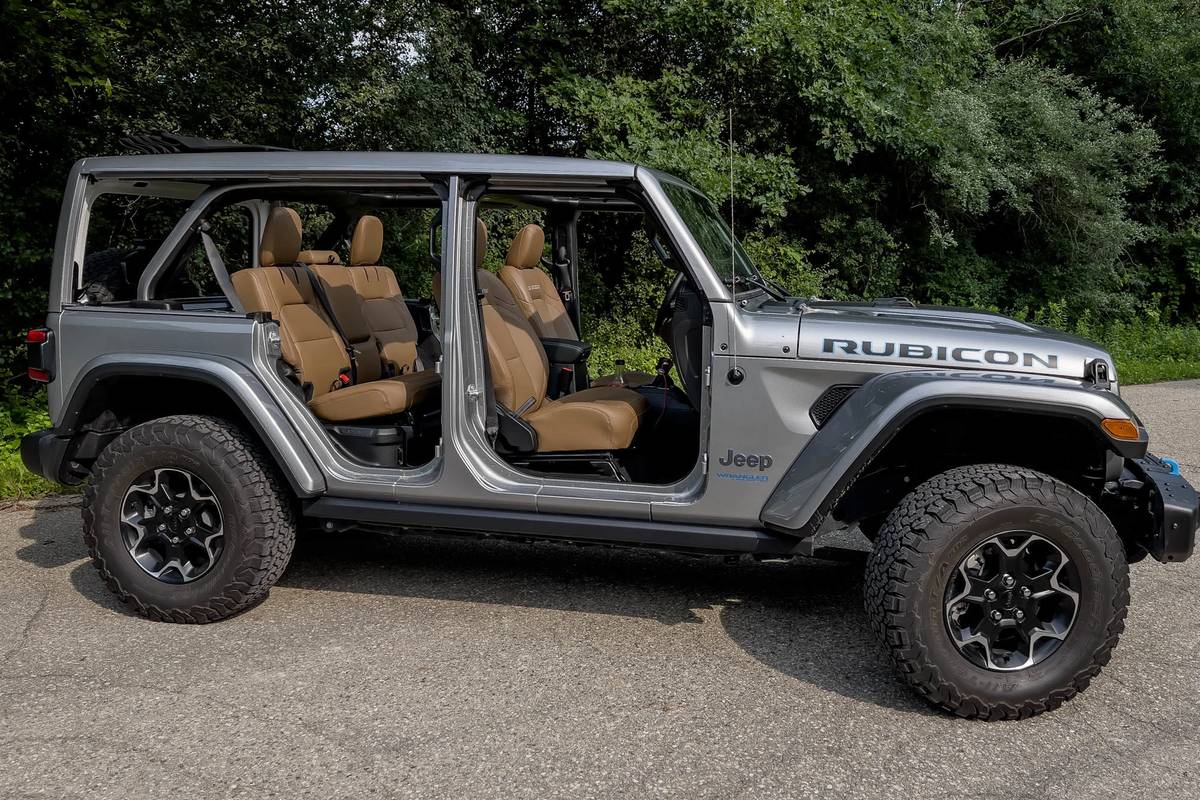
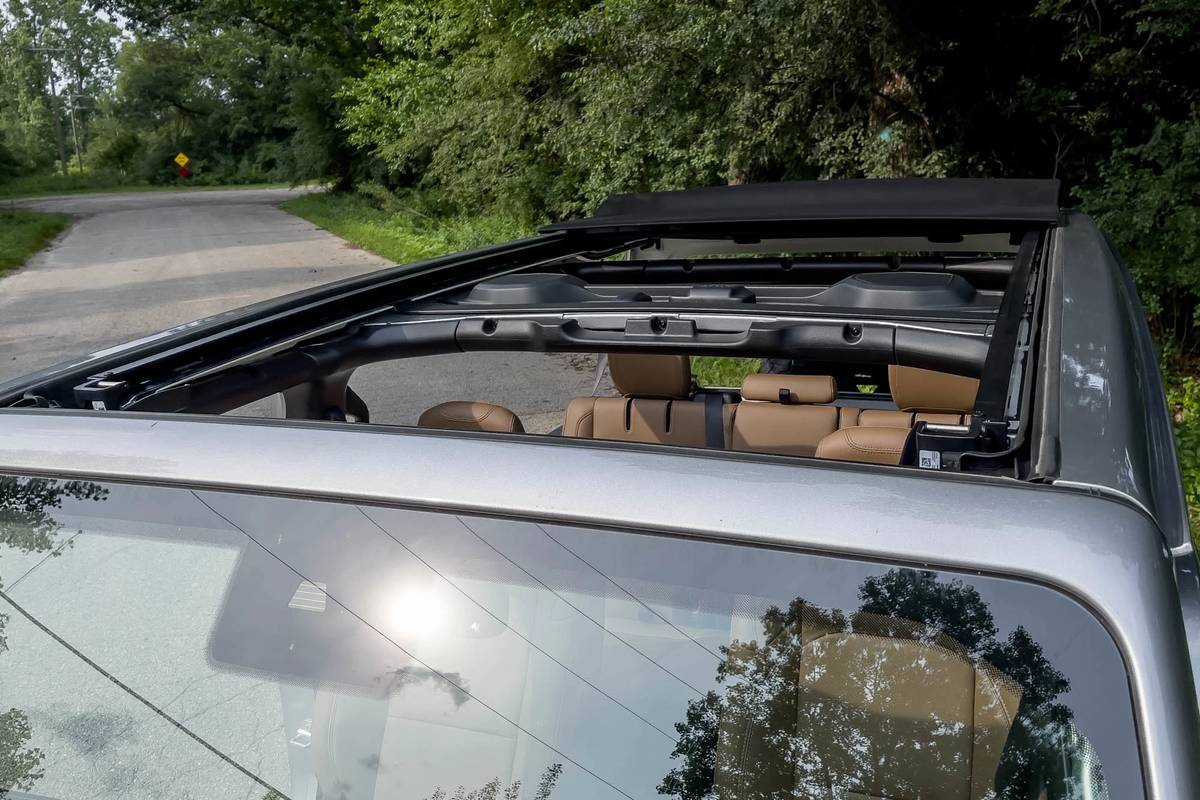








The vehicle I tested is a 2021 Jeep Wrangler Rubicon 4xe plug-in hybrid. We’ve done a full road test of the new Wrangler Sahara 4xe (see the above link), but this was our first exposure to the more off-road-ready Rubicon trim level. The 4xe combines the now-familiar turbo 2.0-liter four-cylinder engine with an engine-mounted motor-generator unit with an eight-speed automatic transmission that has an integrated motor-generator. Electricity is stored in a 400-volt, 17.3-kilowatt-hour lithium-ion battery pack beneath the back seats. The whole thing is good for a combined system output of 375 horsepower and 470 pounds-feet of torque, which made the 4xe the most powerful, quickest Wrangler until Jeep released the absolutely mental Wrangler 392 with its enormous V-8 engine.
The 4xe powertrain is available on three Wrangler trims: Sahara, Rubicon and High Altitude. The Sahara and High Altitude are more street-oriented Wranglers with big wheels and lower-profile tires, and the Selec-Trac full-time all-wheel-drive system with a 2.72:1 low-range gear ratio. But the Rubicon maintains all the ultimate off-road Wrangler’s goodies, such as electronic locking front and rear differentials, electronic sway bar disconnects, the Rock-Trac full- or part-time four-wheel drive, a 4:1 low-range gear ratio, lifted suspension and smaller wheels with 33-inch off-road oriented tires.
- ${price_badge()}
- ${ami_badge()}
- ${battery_badge()}${ev_report_link()}
- ${hot_car_badge()}
- ${award_badge()}
- ${cpo_badge()}
${price_badge_description}
${ami_badge_description}
The EV Battery Rating is based on this vehicle's current expected range relative to the vehicles expected range when new. ${battery_badge_text}
Certified cars are manufacturer warrantied and typically go through a rigorous multi-point inspection.
This car is likely to sell soon based on the price, features, and condition.
${award_blurb}
${award_two_blurb}
Shop the 2021 Jeep Wrangler Unlimited 4xe near you


Like all other Wranglers, this Rubicon 4xe is basically a snap-together kit masquerading as a production vehicle because many components disassemble with common hand tools to a surprising degree. The top on this model is the powered Sky One-Touch roof, a combination of sliding canvas top and rigid side and rear panels. It only disassembles so far, but if you’re so inclined, it can be completely unbolted from the Wrangler for a true open-air experience. The doors are removable by disassembling three bolts and a clip. The windshield folds down by taking out just four bolts. There are attachment points for accessories just about everywhere, which got me thinking: What if we ran an electric range test with the top and doors on, and the top and doors off (aka “naked”)? Will the lesser weight with parts removed overcome the far worse aerodynamic drag that an open Jeep exhibits to boost the range?
Only one way to find out.
The Route
The path I use for testing plug-in hybrid range is a simple one from my home in Ann Arbor, Mich., to a barbecue joint in Dearborn, Mich., about 30 miles away. It’s a mixed-speed route consisting of urban stop-and-go and moderate higher-speed, divided multilane boulevards, but speeds never exceed 55 mph and there are no off-road or dirt-road portions, which is where Jeeps like to spend time. It’s good for providing a variety of conditions, but speed limits are adhered to, and acceleration and deceleration are always done at a moderate, easy pace — no stoplight drag races and no slamming on the brakes unless it’s necessary. I also keep the climate control off, which can trigger the gasoline engine in some hybrid cars and drop electric range by a couple of miles right off the bat in others.
With tires filled to their manufacturer-recommended settings, I set off on a beautiful, sunny day with calm winds to see how far I could go on electricity alone. Then I came home, filled up, charged up, took the doors off, rolled back the Sky One-Touch roof, removed its side panels and unbolted the rear window, and did it again after the Wrangler had fully recharged, which takes about two hours on my home 240-volt Level 2 charger.
The Results
With a full charge and tank of gas, I headed out on the route, keeping things calm and easy, but not holding up traffic or hypermiling anything. I was able to go 30.1 miles in the Wrangler 4xe with the top up and the doors on before the gas engine activated, considerably more than the 21-mile EPA rating. It can be kept in EV mode by pushing the “electric” button on the dash (your other two options are “hybrid” and “e-save,” which either maintains the battery’s current charge or can use the engine to add electricity to the battery as you drive). Keeping it in electric mode will do just that, unless you floor the accelerator, at which point it determines that you need some extra help and the gas engine kicks in for extra oomph.
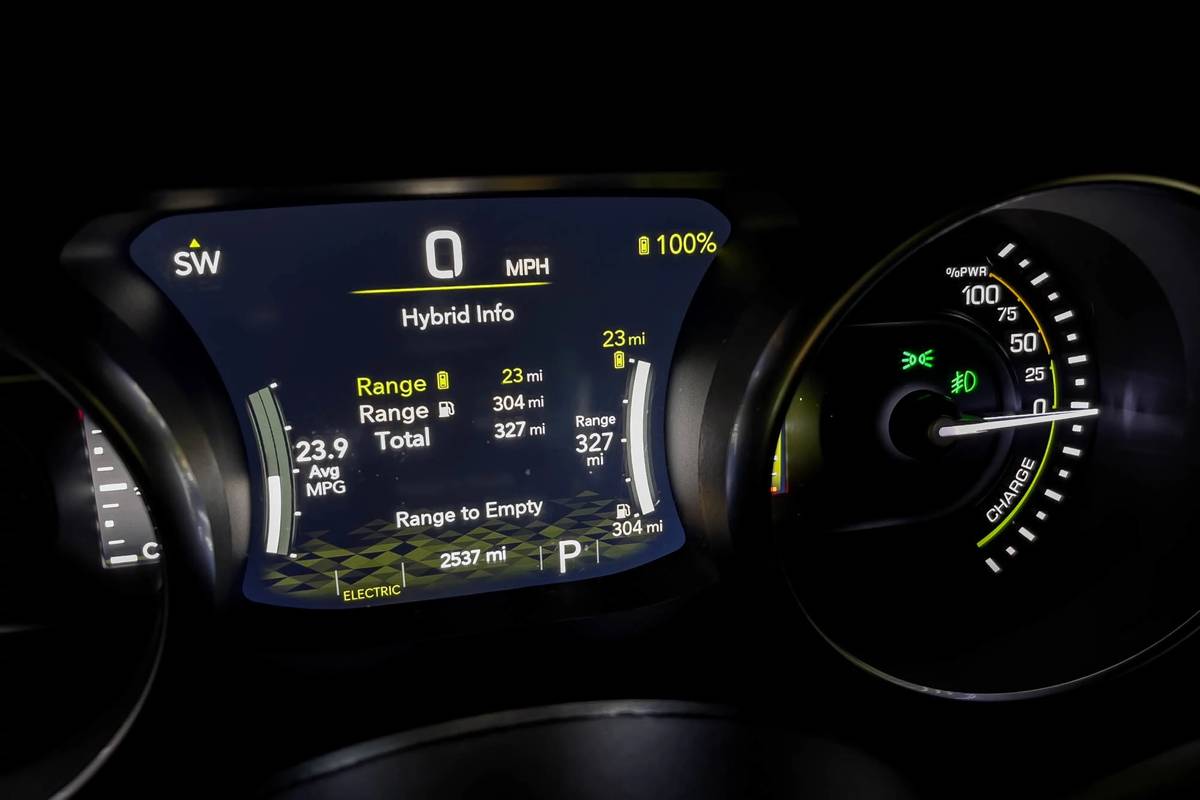

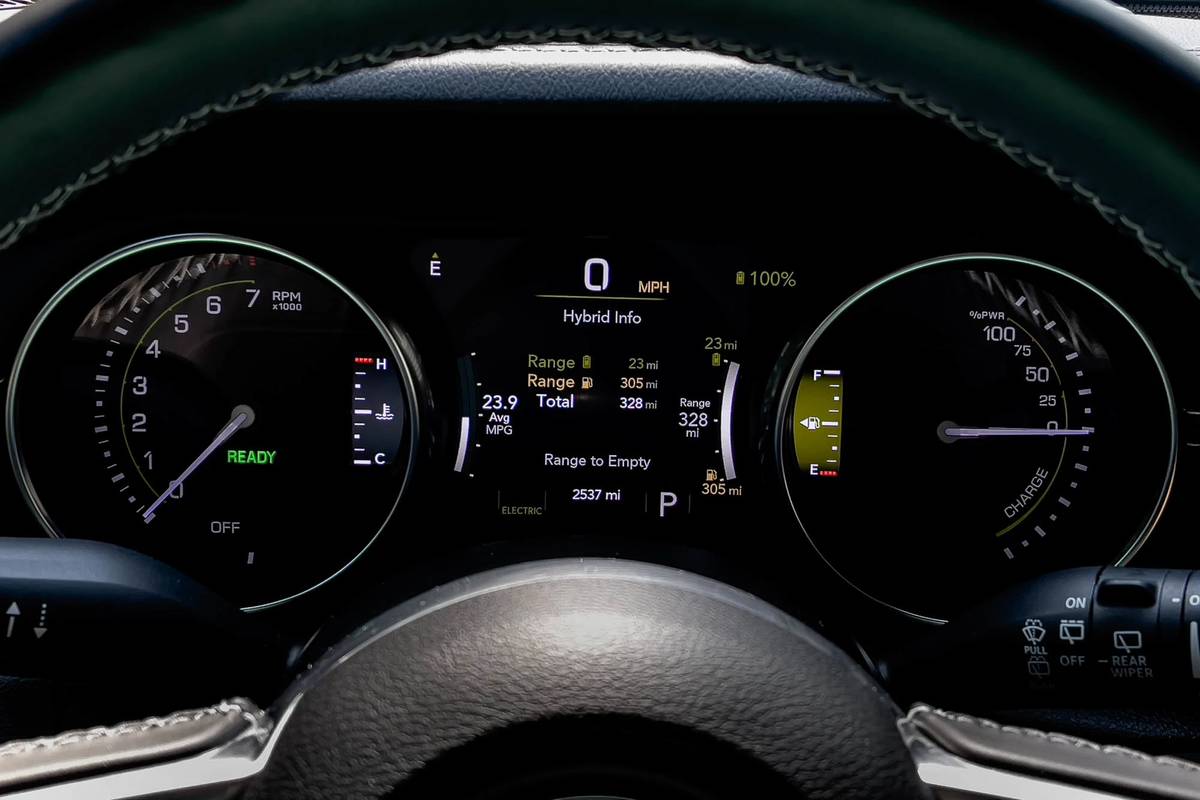
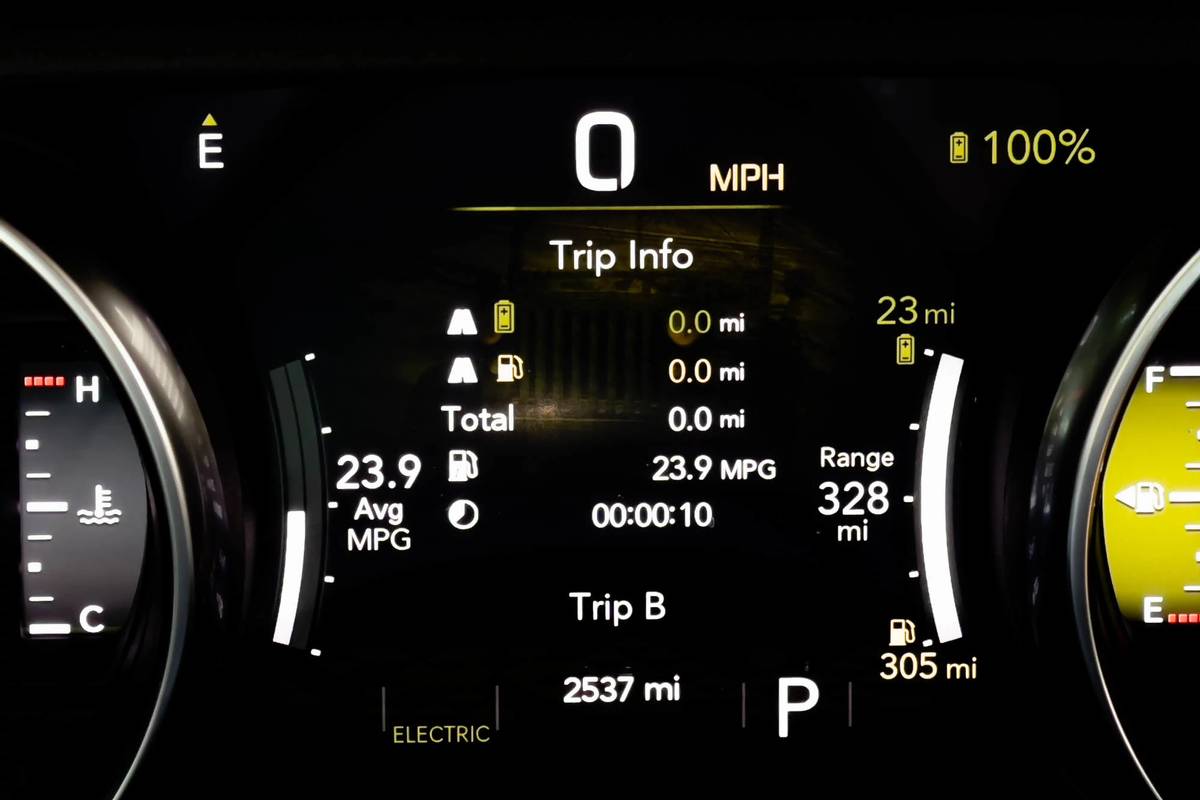
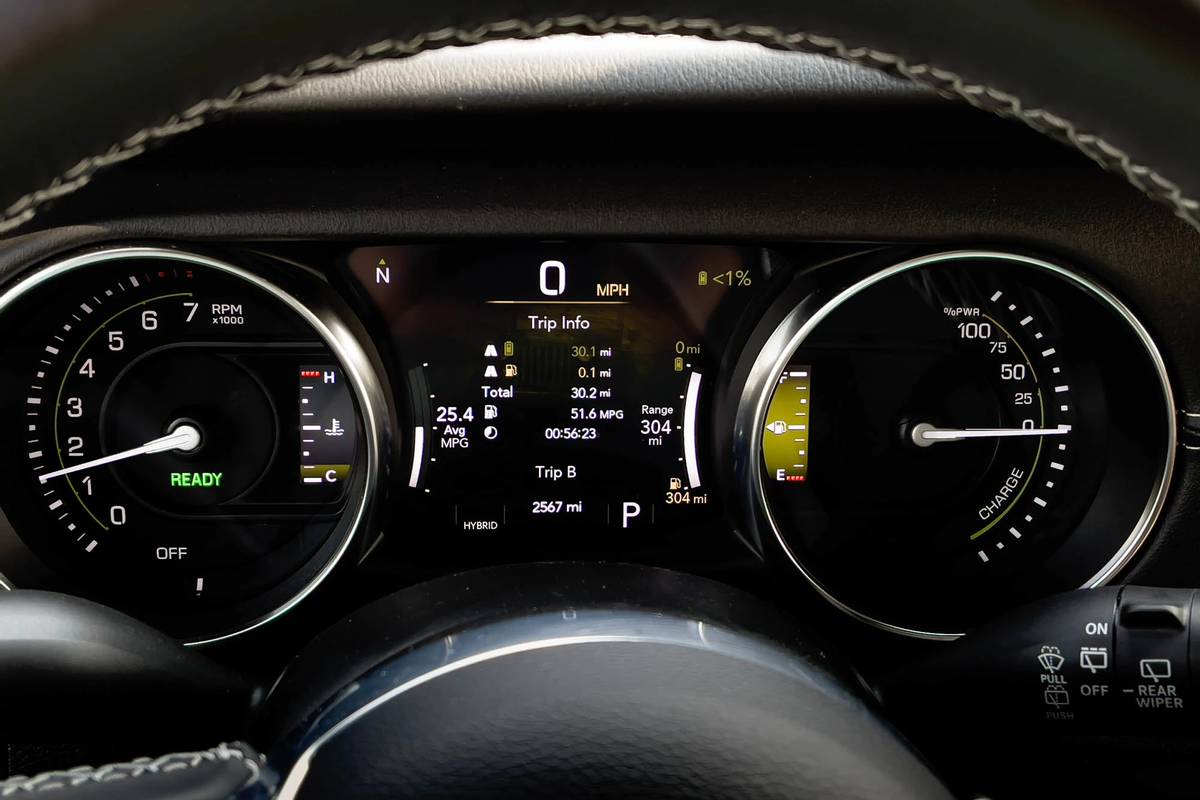
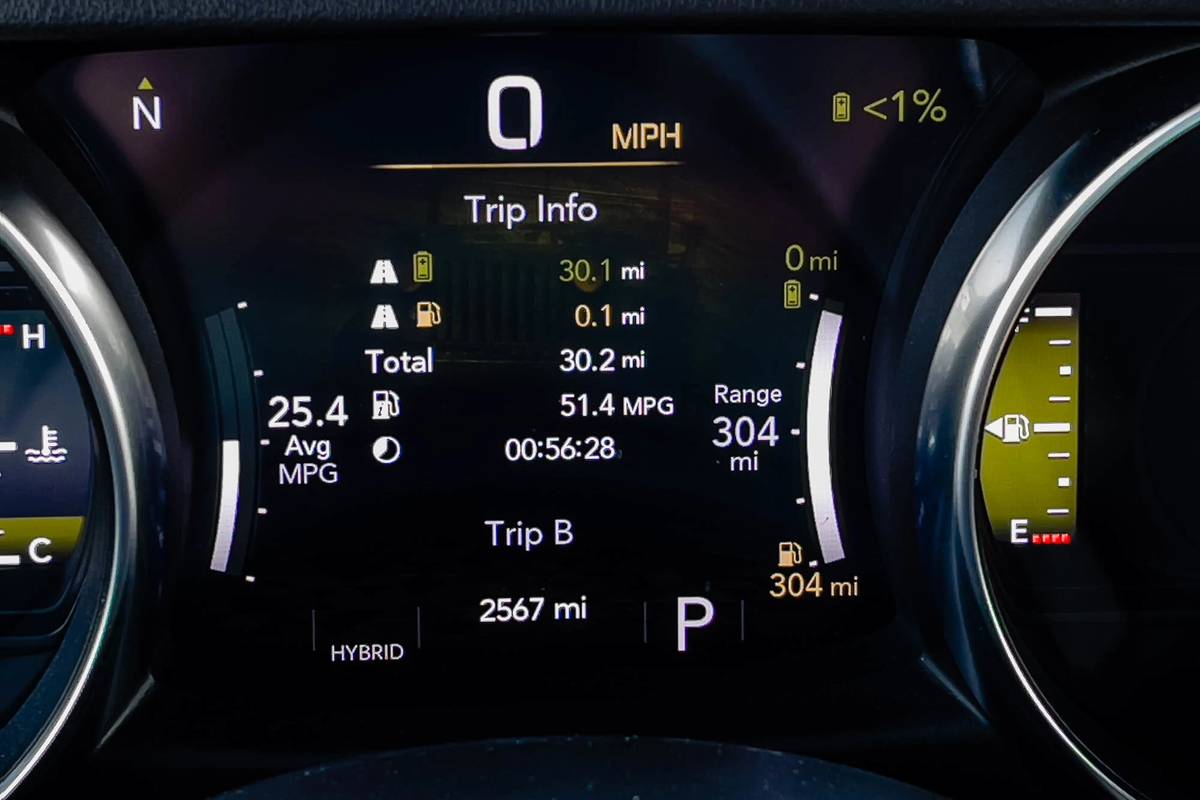
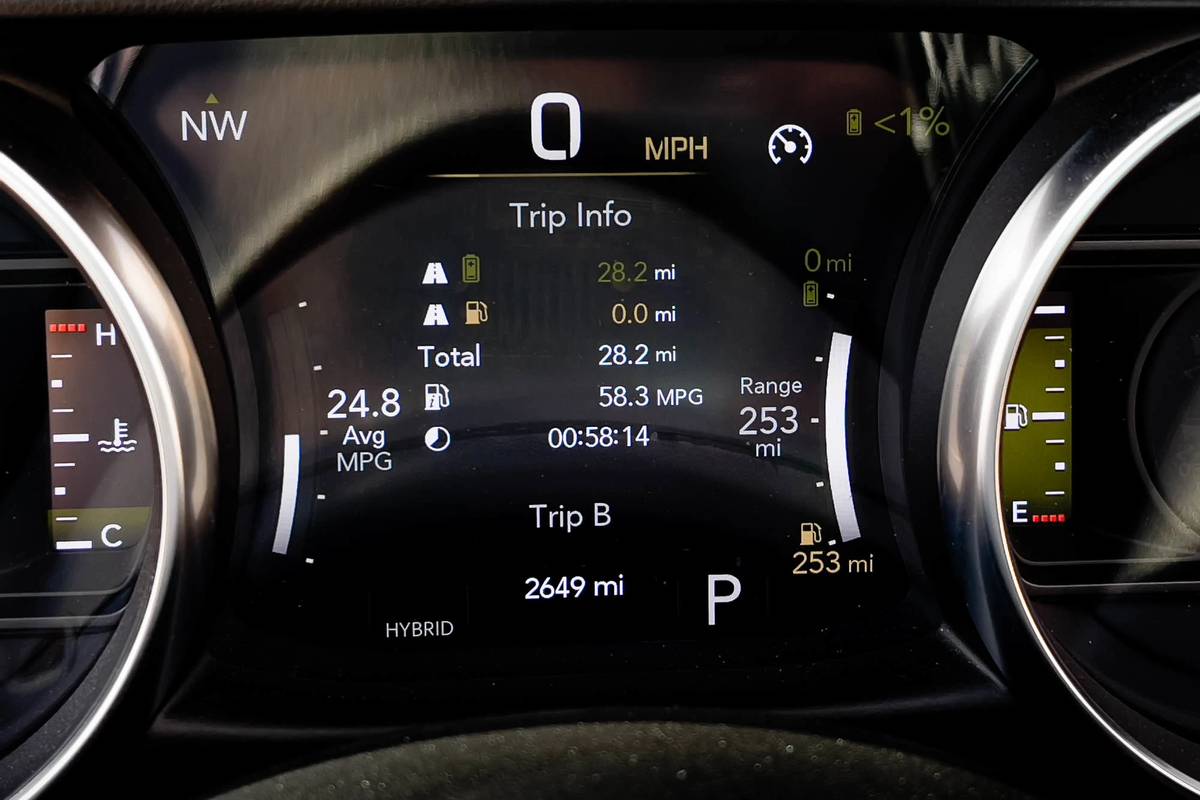







After the juice ran out, I went to a truck stop, topped off the gas tank and weighed the Jeep on the CAT scales to get a baseline reading for what was coming next. I returned home, rolled back the top, unbolted the doors and the rear window, and plugged it in to charge. When it was ready, I set off on the route again and only got 28.2 miles before the gas engine kicked in. Close to the 30.1 miles I got before, and still more than the 21 miles of range, but it was clear that the increased aerodynamic drag was too much for the reduction in weight to overcome, making the Jeep less efficient. Just how much weight is dropped when you take off the doors and unbolt the back window? A total of 240 pounds, a not insignificant sum, but percentage-wise, not all that much given that my Rubicon 4xe with the Sky One-Touch roof tipped the scales at a rather eye-popping 5,360 pounds. Those lithium-ion batteries and the extra motors are indeed heavy — Jeep reports that the 4xe weighs nearly 700 pounds more than a comparable gasoline Wrangler.
More From Cars.com:
- The 470-HP Jeep Wrangler Unlimited Rubicon 392 Is Completely Bonkers
- Jeep Charging Up Trailheads as Part of Electrification Push, Wrangler 4xe Launch
- 2021 Easter Jeep Safari: Jeep Unveils All-Electric Wrangler Magneto, Other Concepts
- Feds Update Safety Standard in Wake of Cars.com Investigation
- 2021 Jeep Wrangler 4xe Plug-In Hybrid Launch Editions Priced Just Under $50,000
So if you’re looking to maximize your electric range, keep it all buttoned up. Of course, what fun is that? The point of a Wrangler is to get it naked and go enjoy the outdoors, and it’s decidedly fun to do so while not making any noise at all — cruising through rural areas, backroads and two-track paths through the forest with the top down and the doors off in near silence is quite an experience. And Jeep says that the 21 miles of range goes a lot further when you’re crawling along off-road at much lower speeds, something we haven’t yet tested but might in the future.
Suffice it to say that on-road, if you plan on picking up a 4xe for commuting duty as well as weekend romps through the wilderness, it can deliver on its promised electric range — and, in my test, considerably more.
Related Video:
Cars.com’s Editorial department is your source for automotive news and reviews. In line with Cars.com’s long-standing ethics policy, editors and reviewers don’t accept gifts or free trips from automakers. The Editorial department is independent of Cars.com’s advertising, sales and sponsored content departments.

Detroit Bureau Chief Aaron Bragman has had over 25 years of experience in the auto industry as a journalist, analyst, purchasing agent and program manager. Bragman grew up around his father’s classic Triumph sports cars (which were all sold and gone when he turned 16, much to his frustration) and comes from a Detroit family where cars put food on tables as much as smiles on faces. Today, he’s a member of the Automotive Press Association and the Midwest Automotive Media Association. His pronouns are he/him, but his adjectives are fat/sassy.
Featured stories
